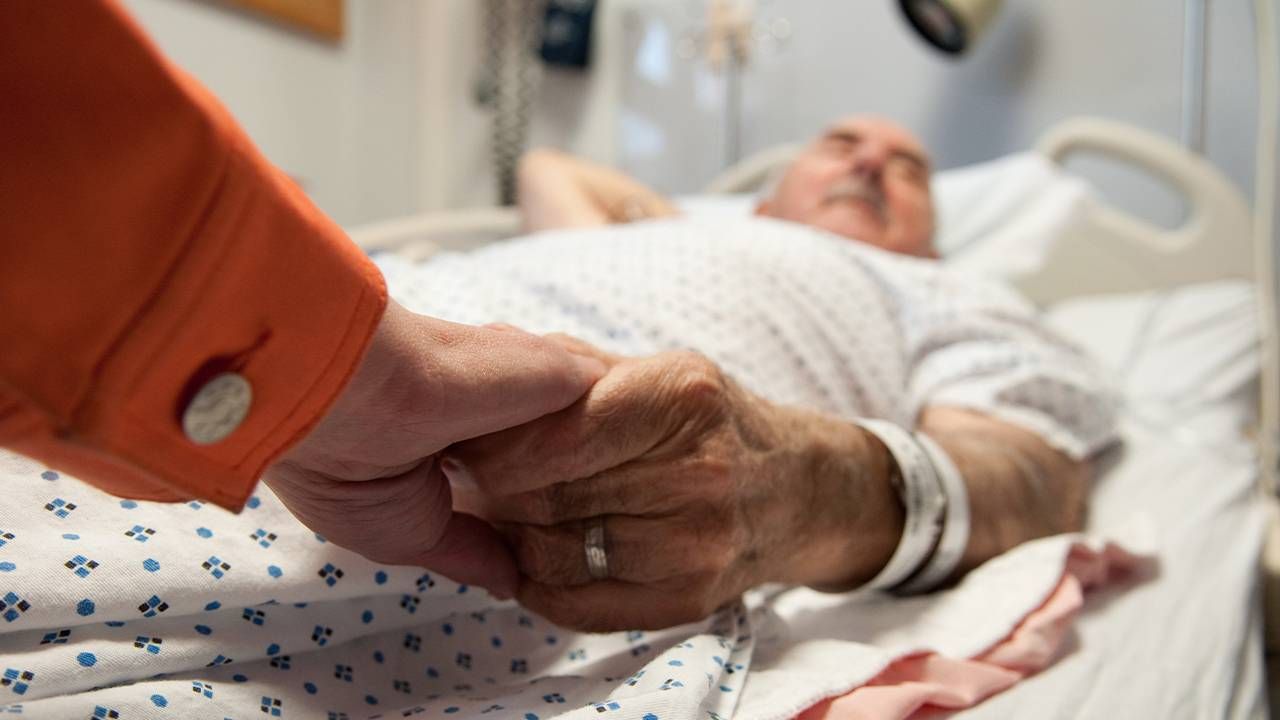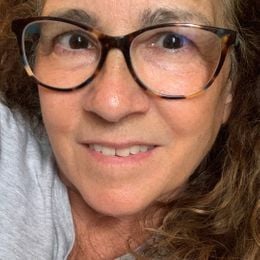Geriatric Emergency Rooms: Better Care, Better Value and Becoming More Common
Geriatric ERs are game-changers in health care. Here's why older adults need them and how they have evolved.
A hospital's emergency department is not always the best place for older people. The problems that bring these patients in may be complicated or made worse by long waits, lack of food and even some standard procedures, doctors say.

While younger people generally go to the emergency department after one-time crises, older adults more often show up because of exacerbating events related to underlying conditions, such as a frailty-related fall or shortness of breath due to congestive heart failure, said Dr. Ula Hwang, professor of emergency medicine at Yale School of Medicine and a key researcher in geriatric emergency medicine.
"It's not like we're going to fix [the condition] and they're never going to have it again," Hwang said.
There are more than 280 accredited geriatric emergency departments in 41 states.
Medical centers around the country are taking note, setting up separate emergency departments or instituting separate policies for emergency geriatric patients. It's improving care and saving money, and the value will become even more evident as the population ages, hospital administrators say.
Anne Arundel Medical Center in Annapolis, Md. opened an acute care unit for older patients in 2013, said Lillian Banchero, senior director for the medical center's Institute for Healthy Aging.
"In these few short years, we have gone from an average age of patients of sixty-five to an average age of eighty-five," Banchero said. "Up to a hundred and two is not uncommon here."
A Collaborative for Change
Anne Arundel is part of the Geriatric Emergency Department Collaborative, an initiative designed to better serve older Americans in the emergency department led by the American College of Emergency Physicians (ACEP), American Geriatrics Society, Emergency Nurses Association and Society for Academic Emergency Medicine. It's supported by the John A. Hartford Foundation (a funder of Next Avenue), and the Gary and Mary West Health Institute.
Yale's Hwang is also involved with the collaborative.
In the ER, the hospital puts together "delirium carts" for patients, with amenities like crossword puzzles, reading glasses, hearing amplifiers, and phone chargers.
"Emergency room practices have changed," Banchero said. In the past, "it didn't matter what you had, when you came in the door, you got IVs and a full catheter, maybe some anti-anxiety medication," she said. "We're just not doing that anymore."
Instead, patients are evaluated individually and there's an effort to involve families and caregivers, she said.
The hospital last year hired its first geriatrician, which is "a dream come true," Banchero said. Having that person on staff "will make all the difference," she noted.
Geriatricians are "few and far between," Banchero said, adding that it's important to have someone who understands the unique needs of older adults, just as it's important to have pediatricians to address the way children present symptoms and deal with the stress of being in the hospital.
"Over the years, we've developed policies, procedures and best practices about how to care for the elderly," Banchero said. "Delirium is one thing we've worked hard on. Up until two years ago, we weren't focused on screening for delirium. Yet it's present in almost sixty percent of our patients."
Education Is Key
Before the hospital started focusing on geriatric medicine, delirious patients were dismissed as "sundowners" (a dementia sufferer who is negatively affected after sunset) and not treated. Now, they get early intervention to prevent the syndrome, Banchero said.
Diversion activities keep patients occupied, preventing them from panicking or from falling as they try to get up, she added.
"The biggest thing we did was education," Banchero said. That includes sending leaders to education courses and getting them certification through programs such as Nurses Improving Care for Healthsystems Elders, she said.
In the ER, the hospital puts together "delirium carts" for patients, with amenities like crossword puzzles, reading glasses, hearing amplifiers and phone chargers — "things that enhance their stay" — Banchero said. "Somebody comes in, they get Grandma into an ambulance, and she's forgotten her glasses, her walker, or her charger. When they get [to the hospital], that's what they want."
Providers are also trained to talk to patients with more of an understanding of their lives, Banchero said.
Many patients "have already articulated what their plan for the rest of their life is," she said. "We need to be present and talk to the patient about what they want," whether it's palliative care or more aggressive treatment.
For some people, the goal might be to make it to a grandchild's wedding a week away, "so then you change the plan of care," Banchero said.
Accredited Geriatric ERs
Anne Arundel's Institute for Health Aging has Level 3, or bronze, certification from the American College of Emergency Physicians, meaning it has at least one doctor and one nurse trained in geriatric emergency medicine, provides access to mobility aids and round-the-clock food and drink, and has taken a "geriatric emergency care initiative" such as a catheterization policy.
Level 1, or gold, certification goes to hospitals with several specific policies and procedures in place, including at least 20 age-specific protocols and staffers dedicated to geriatric patients.
There are more than 280 accredited geriatric emergency departments in 41 states and four countries, and the goal is to have 500 by the end of 2022, said Dr. Kevin Biese, chair of ACEP's geriatric accreditation board of governors. By contrast, there are about 5,000 emergency departments in the United States, he said.
"The traditional emergency department does a really good job of fixing you after you fall. The geriatric emergency department helps you not fall again."
ACEP started its accreditation program about three years ago in response to a system that "wasn't designed optimally for the needs of vulnerable older adults," Biese said.
The idea was to standardize the guidelines and approaches hospitals were taking to provide better care for that population. ACEP has three levels of accreditation, each with a greater set of "best practices" for hospitals to follow, Biese said.
"Whole health care systems are really leaning in" to the concept, he added. Participating systems include the Cleveland Clinic, Mayo Clinic, Northwell and academic centers including the University of California, San Francisco.
The Veterans Administration recently announced plans to establish 70 geriatric emergency departments by December 2022 through a partnership with ACEP, the John A. Hartford Foundation and the West Health Institute. Nearly half of U.S. veterans are over 65 and account for more than twice as many emergency department visits as older adults nationwide, the VA said.
States are also embracing the idea. Biese noted initiatives from New York and California: New York's 2017 Age-Friendly Health System Initiative calls for 50% of health systems to be age-friendly within five years and includes the establishment of age-friendly emergency rooms. California's Master Plan for Aging includes support for expanding geriatric emergency department certification.
Doctors and nurses are trained in geriatric care and communication.
What's more, Biese said, insurers — including Medicare — are taking note.
A study published in JAMA Network Open in March 2021 found that Medicare beneficiaries treated by transitional care nurses or social workers in the emergency department cost Medicare as much as $3,000 less than those treated at hospitals without geriatric emergency departments.
"It makes the health care system more sustainable," Biese said. "The traditional emergency department does a really good job of fixing you after you fall. The geriatric emergency department helps you not fall again."
Fall prevention, dementia screening, "medication reconciliation" (putting together a list of all the medications prescribed by a patient's various doctors) and delirium evaluation are among the major benefits a geriatric emergency department can provide, according to Biese.
While the department doesn't diagnose dementia, staffers can provide referrals and make sure family members or caregivers are aware of the process, he said. Staffers are also trained to spot signs of possible elder abuse or neglect and help families cope.
A geriatric emergency department can pull in specialists like social workers, case managers and physical therapists, setting patients up with services and releasing them safely, rather than admitting them to the hospital where their frailties may worsen, said Hwang.
"Emergency medicine's not really geared to that," she said.
Creating a 'Senior Emergency Center'
Hospitals don't have to "hire a whole new team" to set up an effective geriatric emergency unit, though, Hwang said. Leveraging the social workers and therapists who are already in the hospital and bringing them to the emergency department for assessments is an "ounce of prevention" that may allow a patient to go home earlier and avoid future hospitalization, she noted.
That's the philosophy at Holy Cross Hospital in Silver Spring, Md., said Scott Graham, director of emergency preparedness. Holy Cross' "Senior Emergency Center" is a separate area of the emergency department with softer lighting, less noise, slip-resistant floors and other features making the experience less stressful for older patients, Graham said.
"If you had a child at home, there's a good chance you'd know where the pediatric emergency department was," so the same should hold true for older adults.
Doctors and nurses are trained in geriatric care and communication and "everything is self-contained," so patients can see what's going on and health care providers can see them, he said.
Care managers in the department assess patients' needs and "try to get a picture of the home" to make sure each person is sent home with appropriate support and potential hazards are addressed, Graham said.
Creating a successful geriatric emergency department "doesn't happen overnight," Hwang said. "It takes a lot of working with the other disciplines" and coordinating resources, she said. That's challenging at a time when hospitals are crowded and short-staffed, she added.
"I think people in their own communities should know where geriatric emergency departments are," and if one is not nearby, encourage the local hospital to become one, Biese said.
"I think it's something that communities should ask for, or demand, of their local hospitals," he said. "If you had a child at home, there's a good chance you'd know where the pediatric emergency department was," he added, saying the same should hold true for older adults.
As the population ages, demand for better geriatric emergency care will continue to grow, experts believe.
"We all need to be striving to really focus on geriatric care," Banchero said. "This is not just something fleeting in the night. This is reality."


